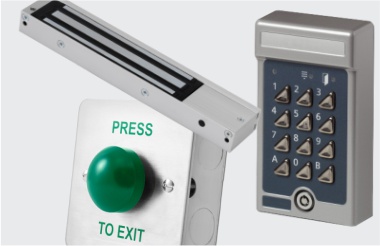Access control for educational institutions - ensuring safety on campus
Security systems have the objective of controlling, monitoring and restricting access to a building and/or an area surrounding a building. This can involve access for both people and vehicles, and in the case of an educational establishment, which could involve children from nursery school stage, through primary and secondary stage and right up to university stage, there are unique challenges to consider.
We put security systems in place to protect people, buildings and assets, and many security risks are shared between commercial businesses, but the education sector has unique and very specific risks, including:
- Movement – There can be people coming in and out of a building all day, so any access control system designed and implemented needs to be controlled, robust and also quick and simple.
- Access levels – There are many people with different access statuses, such as pupils/students of different ages, staff, teachers and contractors, and therefore your system needs to be flexible, adaptable and effective, to manage authorisation appropriately.
- Minors – There could be pupils under 18 who are considered minors and who need to be specifically safeguarded.
- Valuables – As well as the valuables and personal possessions of many, many people on site, there is also likely to be valuable IT equipment, scientific equipment and/or sports equipment on site.
- Grounds – Educational establishments typically consist of main buildings and annexe buildings, as well as grounds with perimeter fencing and car parks. Therefore, there are multiple points of access which require monitoring and controlling.
Considerations when designing an access control system for an educational institution
- Balance – There is a need to maintain an educational establishment as an open and welcoming place of learning, ie. where people are happy to be and can thrive with an open mind, and balance this with maintaining the safety and wellbeing of staff and pupils/students. So any design and system needs to consider both elements in finding a solution that works.
- Easy access – Access control centres on the system used to gain access. Most educational buildings use cards or key fobs issued to all staff and children. These can be worn around the neck and then flashed at a proximity sensor which reads a unique barcode, QR code or digital signal embedded in the card/fob. These are robust and effective but are prone to wear and tear and can be physically shared by children. A system can enable all children to input PIN codes into a digital keypad, but with many people needing to gain access at the same time (ie. at the start of a school day) this can be slow and laborious. Biometric systems are very effective, but can be more costly and time-consuming to set-up.
- Central management – Most systems allow a central administrator to manage the whole system, and to distribute the appropriate access method according to the authorisation level required. In some cases this can also be managed remotely, ie. on a 24/7 basis.
- Safety – An educational establishment needs to know who is on site at any given time, for fire safety and safeguarding reasons. A good access control system will enable this, and can also tell you when people arrive/leave site and where on site they currently are, ie. which zone they last gained access to.
- Restrict access – There are many different zones within an educational building which you may need to restrict access to. So these can include offices, staff rooms, laboratories and chemical storage, IT storage and IT rooms, server rooms, changing rooms and disciplinary areas. Systems are sophisticated enough to manage these areas differently, so you can have different methods of access for inner zones, compared to outer zones. This would enable different access methods such as PIN codes to be used internally, which aren’t suitable elsewhere, because there are less people using them and because staff are likely to be more trustworthy and reliable in terms of not sharing or copying access methods. Systems can also be set-up to restrict access to school hours, so a student/pupil attempting to access the building outside certain hours would not be able to.
- Temporary access – With most modern access control systems you can grant temporary access for visitors on site.
- Audio/visual – Some educational establishments like to have a manned reception area where there is a welcoming presence with a number of helpful roles, but who controls access via a video/audio entry system, for example for welcoming contractors, visitors or parents. This requires some human interaction, but can be combined with a quicker automatic system for other access points in the building.
- Integration – Access control systems can be integrated with other security and safety systems on site, such as CCTV, intruder alarms and fire alarms.
Browse our range of access control systems at MB Direct
For educational establishments there are a number of different risks and challenges to consider, and because of the breadth of possible age groups, ability ranges, site characteristics and multiple access points, it is necessary to design a bespoke system with the levels of sophistication which suit your specific needs. At MB Direct we have the solutions you require and the expertise to design a system applicable to the security threats you face and the practical needs you are experiencing, so check out our range of access control systems and order online today.